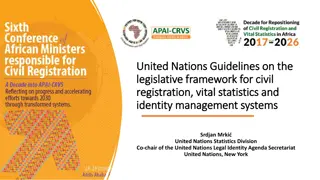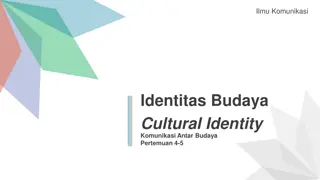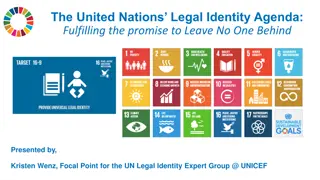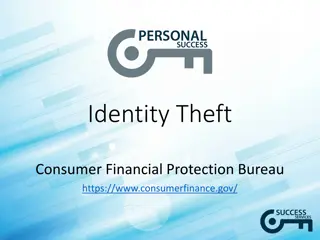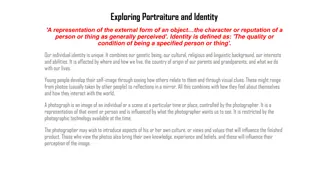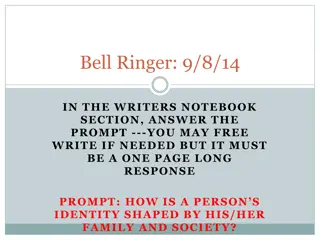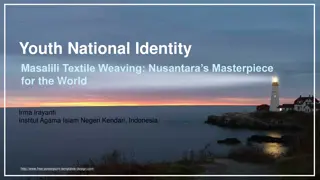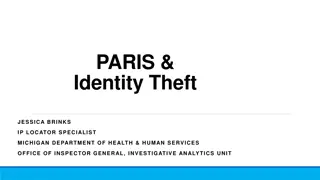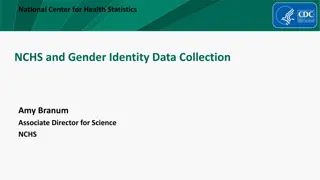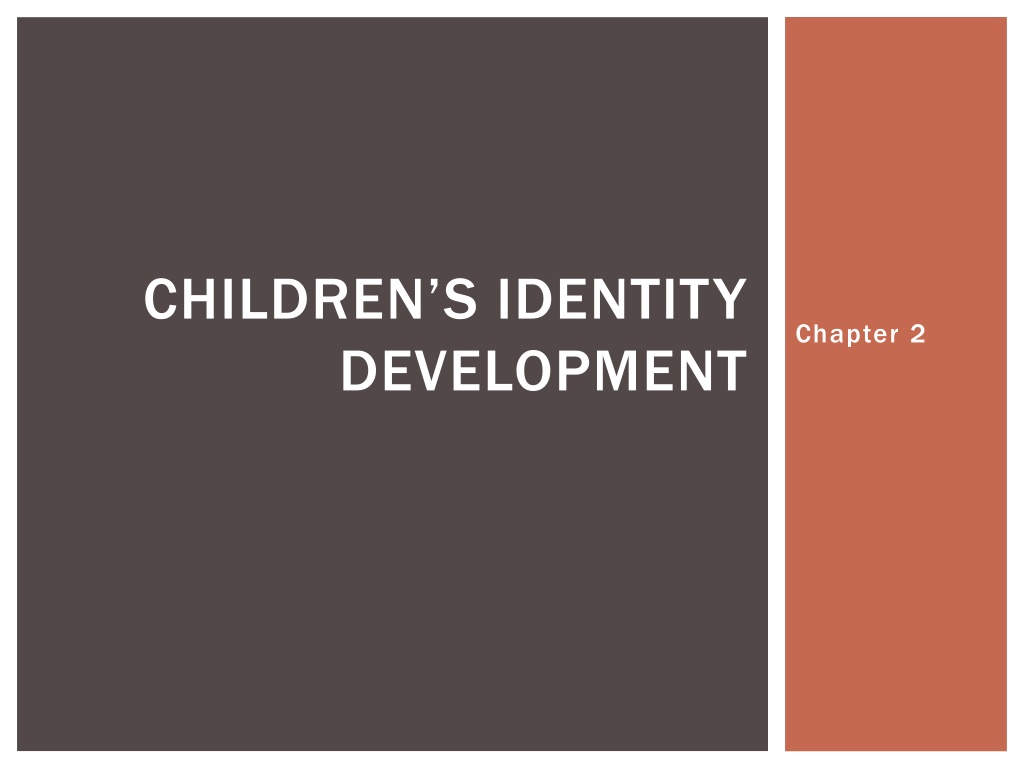
Understanding Children's Identity Development and Social Awareness
Explore how young children develop their identities, social awareness, and sense of self through observation, questioning, and family influences. Discover how teachers play a vital role in nurturing children's positive self-concepts and supporting their exploration of multiple social identities.
Download Presentation

Please find below an Image/Link to download the presentation.
The content on the website is provided AS IS for your information and personal use only. It may not be sold, licensed, or shared on other websites without obtaining consent from the author. Download presentation by click this link. If you encounter any issues during the download, it is possible that the publisher has removed the file from their server.
E N D
Presentation Transcript
CHILDRENS IDENTITY DEVELOPMENT Chapter 2
DISCUSSION QUESTIONS (GROUP WORK) Page 15.
WHAT CHILDREN ARE LIKE Young children curious about their own and others physical and cultural characteristics: From their first year of life, children begin to notice differences and similarities among the people who surround them; Toddlers begin to notice and comment on gender and racial differences; By age 3, children begin asking questions about their own and others racial identity, language, gender, and physical disabilities: By age 4, children begin to show awareness of family structures and economic class differences
Children begin to construct a personal sense of self and multiple social identities: Personal identity includes our name, our specific family, age, talents and interests; personal identity is what most teachers think about when they are planning ways to nurture children s positive self concepts; All people are born into specific social identities (racial identity, gender, culture, language, economic class, family structure, sexual orientation, abilities and disabilities) and may obtain others as adults.
Children learn about their own and others social identities through both overt and covert messages: Begins in our family. Some of what children learn about their own and others social identities come from overt (direct messages, spelled out) lessons (boys don t cry) (law that prohibits gay marriages); Some learn about social identities from covert (indirect messages and hidden) (ex. people are all alike, we should treat all people with respect ) and yet their family may not interact with people different from themselves
Young children are learning about who is and isnt important: When children see in the pictures only two-parent families, they may learn that this is the right family
Children try to make sense of all that they see and hear: Teachers must expand and correct children s ideas Young children develop pre-prejudice as they absorb negative attitudes, misinformation, and stereotypes about various aspects of human diversity
Children begin to construct their own versions of who belongs in their country: Children begin to be aware of the power dynamics linked to social identities: They quickly absorb messages power relationships (who is the boss) Internalized oppression is a set of hurtful, inaccurate beliefs about oneself in relation to one s social group that results in behavior such as self-and group rejection, shame, and even self-hate Internalized privilege is a set of hurtful inaccurate beliefs that entitled to advantages and benefits more than the other groups
Racial stereotypes/discrimination Racial stereotypes/discrimination http://searchcenter.intelecomonline.net/playClipDirect.aspx?id=16499 A3C13AF531759BD8667FAF09CC66F7EAB4E3DD4D62909A0C825FA3 0FA0DAE384BDD3A21946E90B91FED448802EA Immigrant families in the USA Immigrant families in the USA http://searchcenter.intelecomonline.net/playClipDirect.aspx?id=16499A 3C13AF531759BD8667FAF09CC66F7EAB4E3DD4D6298E63185B3439 292A75459909788D3FE64F03E65C80AEA912 http://searchcenter.intelecomonline.net/playClipDirect.aspx?id=16499A 3C13AF531759BD8667FAF09CC66F7EAB4E3DD4D62961648E7FF0D70 8B2C20EEFCA61A78FAFB472B9922CCB50DF
Group work: My Family Book




